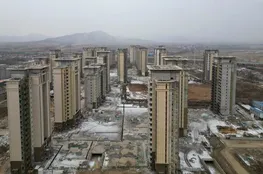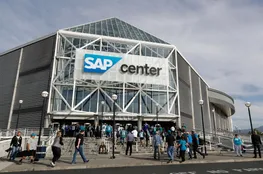In recent years, the commercial real estate sector has been experiencing a significant revival led by various factors shaping the market dynamics. Matt Argersinger, an advisor at The Motley Fool and leader of its Dividend Investor service, highlights the upswing in commercial real estate, excluding the office sector. Alongside Motley Fool host Mary Long, Matt discusses the factors driving this resurgence and the complexities within different segments of the real estate market.
A key indicator of this revival is the performance of real estate-focused ETFs. Matt mentions that the iShares US Real Estate ETF and the Vanguard Real Estate ETF, with significant exposure to Real Estate Investment Trusts (REITs), have outperformed leading indexes like the S&P 500 and the NASDAQ 100 over the past 12 months. This shift has caught investors off guard, challenging the preconceived notion that traditional real estate could lag in economic upturns.
This resurgence is nuanced, impacting sectors differently. While the office space continues to face uncertainties, with traditional setup languishing under secular challenges, other areas such as retail and hospitality have shown resilience. Green shoots are evident in sectors like multifamily and industrial real estate, which are navigating supply challenges to find solid ground.
The retail sector, for instance, demonstrates a remarkable turnaround. Contrary to the long-held belief that brick-and-mortar stores were fading amidst the e-commerce boom, well-located retail spaces are seeing heightened activity. Companies such as Simon Property Group and Kimco Realty report some of their highest occupancy rates, highlighting the sustained consumer preference for in-person shopping experiences that offer more than just retail therapy—like dining and entertainment options.
Commercial real estate's upward trend also correlates with macroeconomic shifts. The Federal Reserve’s stance on interest rates, potentially signaling future rate cuts, plays an influential role. Lower capital costs and increased liquidity could further bolster real estate investments, echoing through public markets and influencing private sector valuations.
On the housing front, the U.S. continues to grapple with a profound supply shortage. Since the 2008 financial crisis, underbuilding has led to a shortfall of 2-3 million homes, exacerbated by growing demand from millennials entering peak home-buying years. Addressing this requires more than private sector initiatives; comprehensive government intervention and strategic zoning reforms are crucial to stimulate new constructions.
Despite some homebuilders experiencing unprecedented success, there is a conservative streak dictating construction volumes, partially due to memories of past financial strains and current interest rate fluctuations. Even amidst current challenges, the optimism remains for a gradual market correction buoyed by economic conditions and strategic real estate investments.
Finally, the sector's future will also be shaped by technological advancements and energy requirements, especially with the expansion of data centers to cater to the burgeoning artificial intelligence demands. This aspect underscores a broader intersection of real estate with energy policies and technological growth, presenting both opportunities and challenges.
In summary, the commercial real estate market is rebounding through a complex confluence of sector-specific strengths, macroeconomic influences, and long-term structural challenges. As investors navigate this dynamic landscape, strategic positioning and responsiveness to emerging trends will be crucial to capitalizing on the real estate renaissance.
























